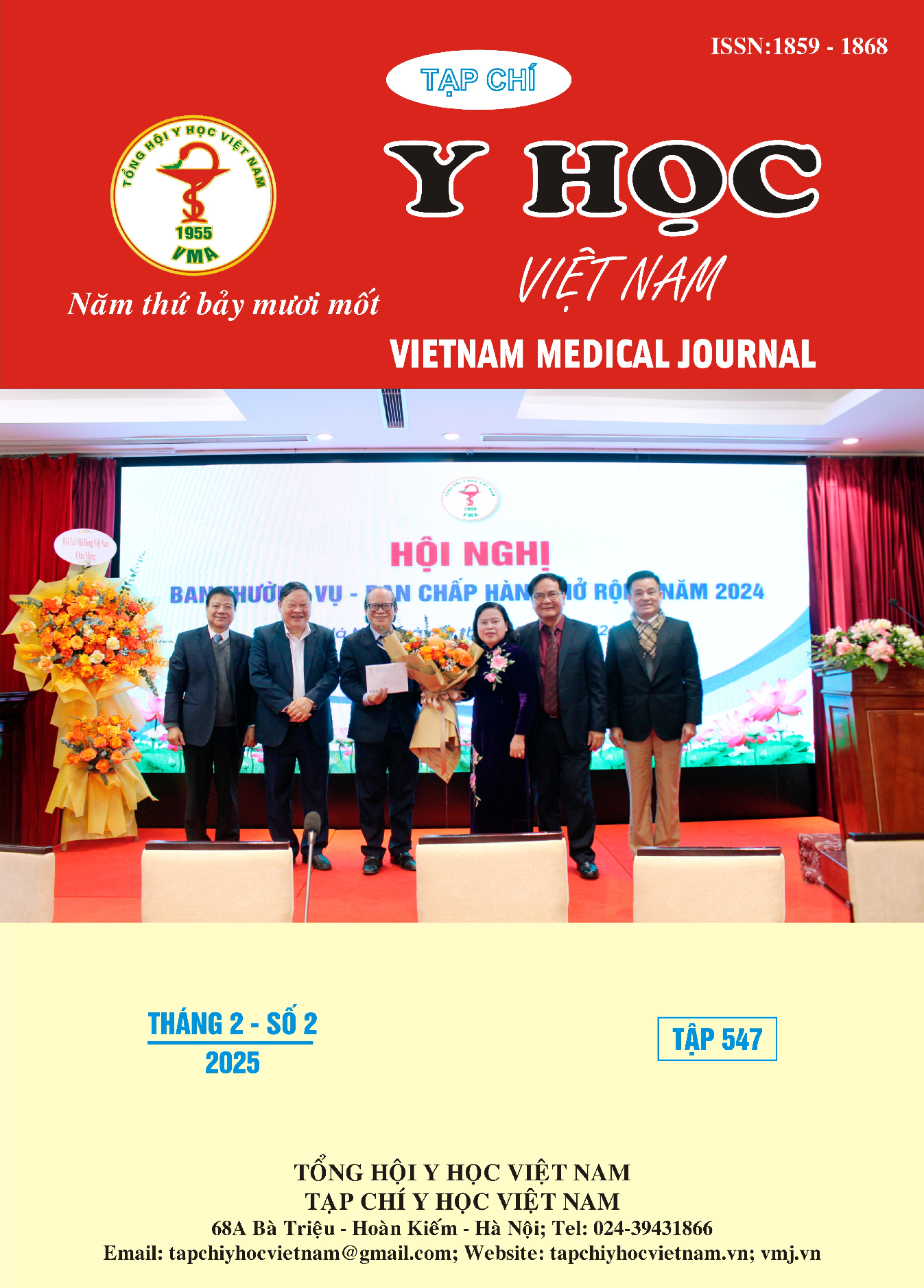EPIDEMIOLOGICAL CHARACTERISTICS AND SOME FACTORS RELATED TO HAND, FOOT AND MOUTH DISEASE IN CA MAU PROVINCE 2017-2023 PERIOD
Main Article Content
Abstract
Introduction: Most cases of Hand, Foot and Mouth Disease recover without sequelae. However, some cases have serious complications and even death. Therefore, it is necessary to determine the epidemiological characteristics and risk factors. Objectives: To determine the epidemiological characteristics: place of residence, month of illness, related factors such as: age group, gender, medical facility after detection of the disease, in Ca Mau province 2017-2023 period. Subjects and methods: A retrospective cross-sectional study was conducted on 18057 children with Hand, Foot and Mouth Disease 2017-2023 period. Results: The rate of children with Hand, Foot and Mouth Disease at grades 1 and 2a accounted for 98.38%, boys 59.59% (10761) girls 40.41% (7296), the hospitalization rate was 65.75%, outpatient treatment was 34.25%, the disease appeared sporadically throughout the year and increased from September to November. Children in rural areas who went to medical facilities late increased the difference in complications with OR of 1.22 and 1.50, respectively, with p both <0.05. Conversely, the older the child, the lower the rate of complications when infected with OR=0.86 95% CI [0.84-0.88] and there was no difference in the status of complications in boys and girls, p=0.12 after multivariate analysis. Conclusion: Most children with Hand, Foot and Mouth Disease are mild, boys are more affected than girls, the disease increases from September to November. Children in rural areas who go to the doctor late increase the difference in complications, on the contrary, the group of older children will reduce the rate of complications.
Article Details
Keywords
hand foot mouth disease; complications; month of illness.
References
2. Thái Quang Hùng (2017), Nghiên cứu đặc điểm dịch tễ học bệnh tay chân miệng tại tỉnh Đăk Lăk và các yếu tố liên quan đến tình trạng nặng của bệnh”, Luận án tiến sỹ công cộng, Trường Đại học Y dược, Đại học Huế.
3. Lê Đăng Ngạn (2019), “Đặc điểm dịch tễ bệnh tay chân miệng tỉnh Tiền Giang năm 2018”, Tạp chí Y học dự phòng, 29(11), tr: 156-162.
4. Nguyễn Đắc Thăng và cộng sự (2022), “Đặc điểm dịch tễ và một số yếu tố liên quan đến bệnh tay chân miệng ở trẻ dưới 5 tuổi tại huyện Gò Công đông tỉnh Tiền Giang giai đoạn 2015-2019”, Truyền nhiễm Việt Nam, 3(39), tr: 74-79.
5. Bo Chen, et al (2021), “Epidemiological characteristics of hand, foot, and mouth disease in China”, Medicine, 100:20, (e25930).
6. Esposito S, Principi N. Hand foot and mouth disease: current knowledge on clinical manifestations, epidemiology, aetiology and prevention. Eur J Clin Microbiol Infect Dis 2018;37:391–8.
7. Ho M, Chen ER, Hsu KH, et al. An epidemic of enterovirus 71 infection in Taiwan. N Engl J Med 1999;341:929–35.
8. Ji T, Han T, Tan X, et al (2019), “Surveillance, epidemiology, and pathogen spectrum of hand, foot, and mouth disease in mainland of China from 2008 to 2017”, Biosafety and Health, 1, pp:32-40.
9. Sun BJ, Chen HJ, Chen Y, An XD, Zhou BS. The risk factors of acquiring severe hand, foot, and mouth disease: a meta-analysis. Can J Infect Dis Med Microbiol 2018;2018:2751457.
10. Yang F, Ren L, Xiong Z, et al. Enterovirus 71 outbreak in the People’s Republic of China in 2008. J Clin Microbiol 2009;47:2351–2.


